A conservation success story: This is how the gharials were bought back from the brink in Bihar’s Gandak river
Gharials are a unique crocodilian species presently found only in the 14 widely-spaced riverine ecosystems in India, Nepal, and Bangladesh. Over the years, threats like river fishing, entanglement in nets, and riverbank erosion causing loss of nests during the breeding season have led to a decline in their population. The Bihar government and the Wildlife Trust of India joined hands to save them


Valmikinagar, Bihar
On June 14, in a positive conservation milestone, 86 newly-hatched gharials (Gavialis gangeticus) were released into the Gandak river in North Bihar by the Wildlife Trust of India (WTI)’s Gandak Gharial Recovery Project team. These hatchlings had emerged after a successful incubation of 65-70 days from the nests protected by the community watchers engaged in the project.
Gharials are a unique crocodilian species, riverine, and primarily fish-eating. At present, they are found only in the 14 widely-spaced riverine ecosystems in India, Nepal, and Bangladesh, and have gone extinct in Bhutan. With a much greater historic geographic distribution, from Pakistan to Myanmar, their present habitat has shrunk drastically in recent years. Threats include river fishing, entanglement in nets, riverbank erosion causing loss of nests during the breeding season, all of which have led to serious population decline relegating gharials to the Critically Endangered category in the International Union for Conservation of Nature’s red list.

A decade ago, in a joint survey by the WTI, WWF (India), the Gharial Conservation Alliance (GCA) and the Vikramshila Biodiversity Research and Education Centre (VBREC), the entire stretch of 320 kms of the Gandak — from the Gandak Barrage near the India-Nepal border up to the confluence of the Gandak with the Ganga river — was surveyed for the first time. This survey kicked off gharial conservation works in the Gandak as the survey team had spotted both male and female gharials, indicating congregation and possible nesting in this riverine stretch. This sparked conservation interest in the Gandak river as a gharial habitat to be monitored periodically to help conserve this species in decline.
This first survey’s initial results enthused the state government of Bihar on gharial conservation and, in 2012, it tasked the Wildlife Trust of India to formulate a Reintroduction and Recovery Plan for gharial populations in the Gandak. The Gharial Gandak Recovery Project was born out of this recovery plan.
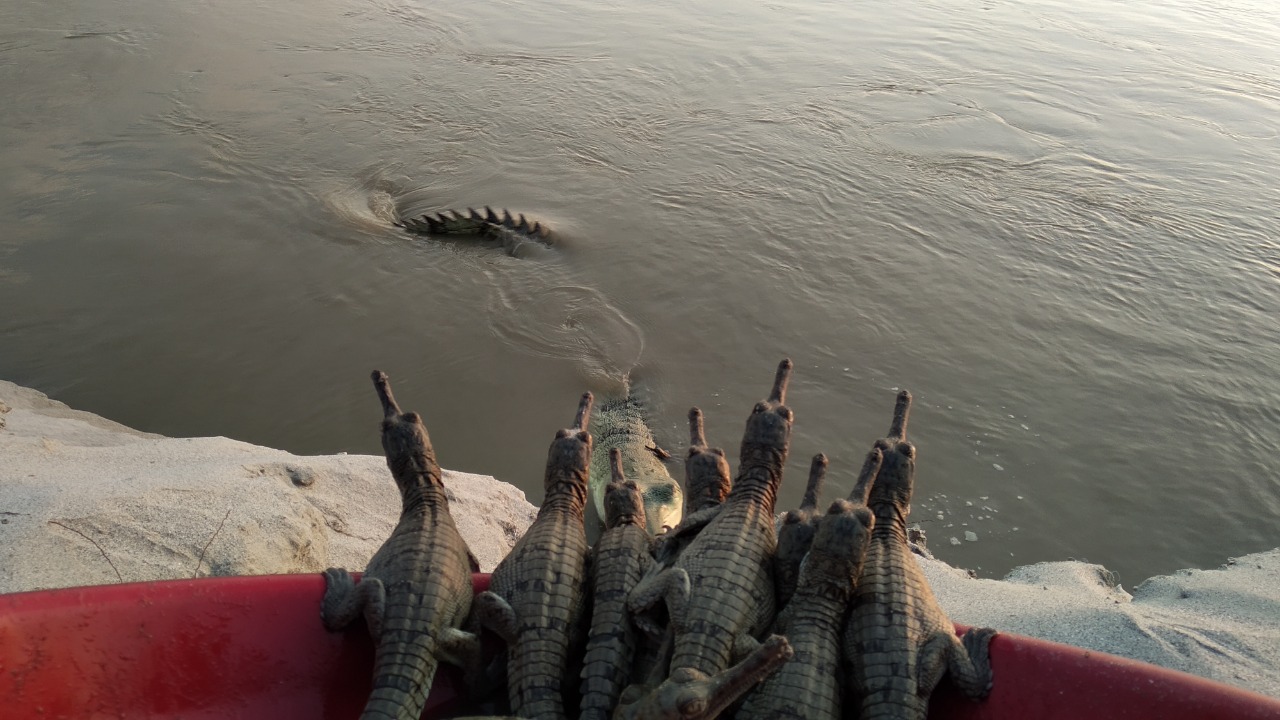
The project rolled off with the release of captive-born gharials at the Sanjay Gandhi Biological Park, Patna, in 2014. “The initial years were fraught with surveying the river banks with safety being a priority, considering this area had a law and order problem, and also interacting with fisherfolk of the river and the farmers using the river banks, enquiring if they had seen any gharials,” Samir Sinha from the Wildlife Trust of India, who has been associated with the project since its inception, told Gaon Connection.
He added: “We initiated conversations with local villagers enquiring about their fish haul of the day before steering the talk gently towards gharials, as they were wary of us in the beginning.”
The trust-building process was a key to conservation as without the participation of the local stakeholders, the project would not have been able to achieve significant and sustained conservation successes. A sense of ownership was gradually instilled in the fishing community and also the farmers, who used the river banks to grow sugarcane and cucurbits (watermelon, cucumbers etc). The initial reports of gharial nest congregation from the users of this landscape and the WTI project team realised early on that a participatory approach is needed for conservation successes in gharial recovery.
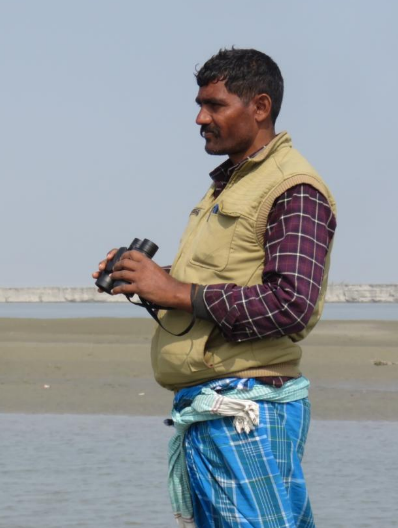
Community watchers from the fishing community were trained and equipped with binoculars to observe gharials and track their nesting behaviour along the banks. “The female gharial seldom comes out on the bank, and when we see it on a bank during the nesting season, we know it’s ready for nesting,” explained Sinha.
Gharials are unique among crocodilians in having a sexual dimorphism among adults, with the male having the pot-shaped snout and the female having a regular slender snout. This was traditional knowledge known by the community who addressed the male as matukawa (pot-bearing) and the female as sugawaha (slender-beaked) in common parlance.
Identifying and engaging of key community members with traditional knowledge and in whom a sense of ownership for the species could be instilled helped in a change in perception from ignoring the nest sites and going about their business to spotting the nests and protecting them.
One of the key factors in gharial decline was the annual release of waters from the Gandak barrage, which would inundate the downstream tributaries, eroding the riverbank in stretches and often leading to the nest eggs being washed away. The community watchers were trained to shift the nest eggs carefully to higher ground within the same habitat (in-situ relocation of nests).
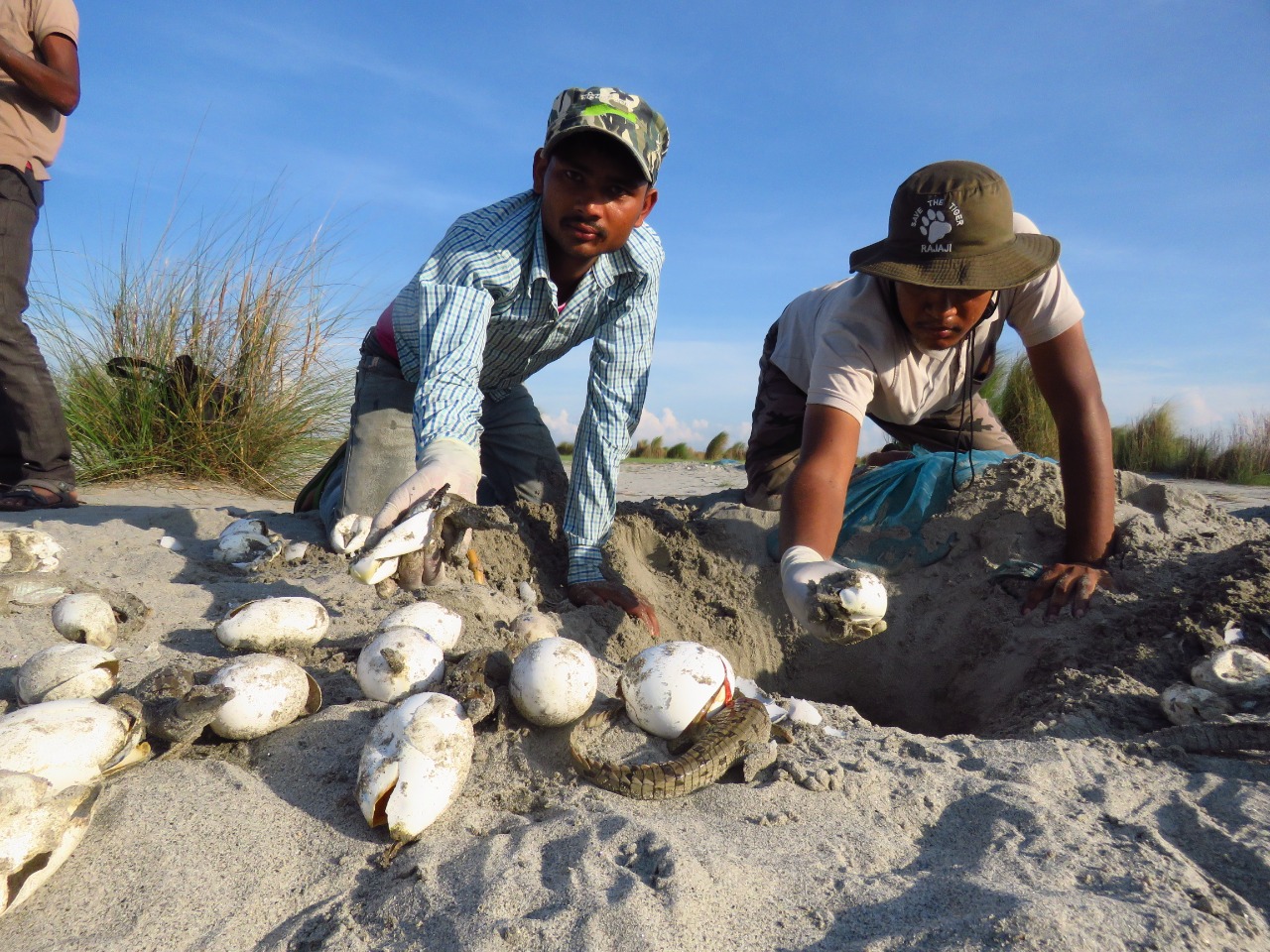
“Over the years, we learned how far and how high we need to relocate the nests to protect them from the riverbank erosion,” said Subrat Behera, a biologist with the WTI Project.
The egg relocation project strategy has ensured successful hatching and release of hatchlings year after year in the Gandak river since 2014. Community watchers patrol the river bank to spot the nesting behaviour and locate nests which are then relocated to an artificially-excavated nest for incubation (65-70 days) till the hatchlings emerge. “We have had continuous nesting in all the years since 2014, except during 2017 when we couldn’t spot any nests,” informed Behera.
Other threats to the gharial habitat include tropical storms in this region, entanglement in fishing nets and the fishing traffic in the region. Community awareness programmes have also been organised to sensitise the local community about the importance of gharials. Posters and information pamphlets are distributed among the community, especially during community events like the monthly Gandak – Narayani Aarti held both in India and Nepal among the riverbank communities.
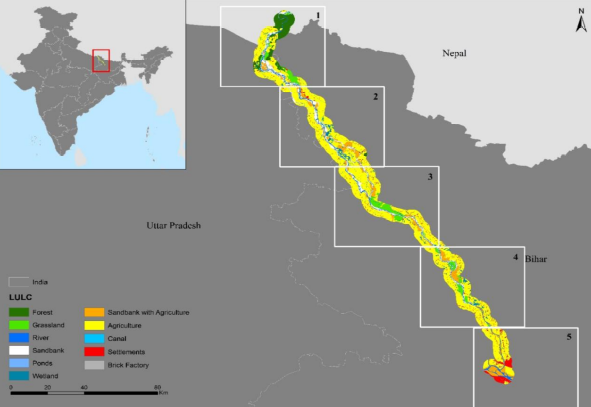
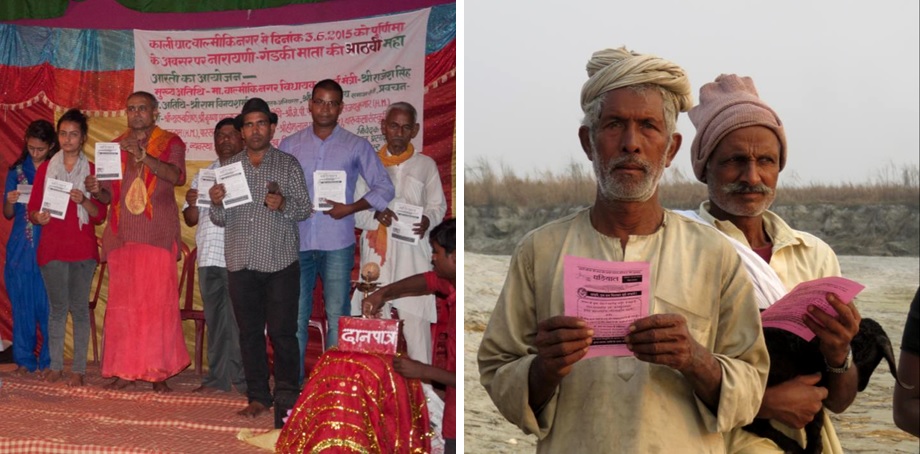
“The Bihar government, and especially the state forest department, has been supportive of the project throughout. We were able to fix the VHF and satellite tags on the released gharials for monitoring habitat use, thanks to the state government. Of late, we have also received financial support from the Los Angeles Zoo and Botanical Gardens,” informed Sinha.
The state Chief Minister, Nitish Kumar, has also taken a personal interest in the project ensuring support of the state machinery to the project since its launch.
Two years back, in 2018, the State Wildlife Board, in a meeting chaired by the chief minister, accepted the Wildlife Trust of India’s recommendation to declare a stretch of 140 kms of the Gandak river as a Conservation Reserve under the Wildlife Protection Act, 1972.
The Wildlife Trust of India is actively pursuing this declaration to be notified, which would require the prior consent of the villagers for formalizing this prime breeding habitat as a protected area. Through this move, apart from the gharials, which will get the necessary legal protection, the riverine habitat of muggers, the smooth-skinned otters, the Gangetic dolphin, and the freshwater turtles will also be protected.
A Gharial Conservation Reserve would give the much-needed impetus to the recovery of gharial populations in this stretch of the river, providing a legal sanctity to this habitat.
This year’s hatching success has been a result of continuous monitoring and surveillance of the riverbank even during the nationwide lockdown.

“Soon the hatchlings will be in a crèche close to the mother and till the monsoon flood comes they will be guided by the mother to avoid flash floods taking them into sheltered lagoon-like situations,” explained BC Choudhury, an IUCN Crocodile Specialist Group member, and the WTI’s Trustee.
“Since the inception of the project, we have successfully released 168 hatchlings back to the wild,” stated Dr Sinha.
The construction of the Gandak barrage in 1960s created a physical barrier between the upstream gharial populations and the downstream populations. There have been instances, however, of the gharials traversing the barrage and making their way all the way to West Bengal. Released gharials are marked uniquely in their tail scutes, which helps identifying them in open waters later on.
As recently as May this year, a gharial released from Chitwan (Nepal) in Narayani (Gandak’s Nepali name) got entangled in Hooghly in fishing nets, it was later identified from its tail scutes by Subrat Behera who came across its photos in social media.
There is clearly a long way to go in achieving population stability for the critically-endangered gharials, declaration of a conservation reserve seems an achievable goal. What’s also needed is more synergy between the officials releasing barrage waters and between forest officials of Nepal, Bihar, and West Bengal for an integrated effort towards conserving gharials.
Amlan Dutta is the Head – Communications with the Wildlife Trust of India

